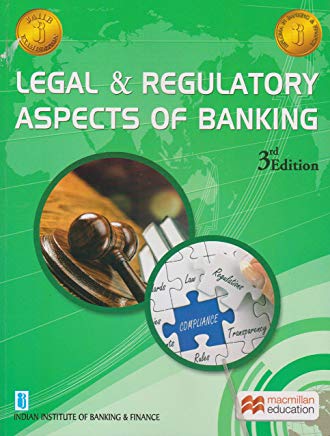JAIIB PPB Unit 29 - Non-Performing Assets (Year: 2019)
The prudent guidelines were first issued by RBI in the year 1991 implemented wef 01.04.1992 on recommendations of Narasimham committee covering, income recognition, asset classification and provisioning.
- Prudential norms prescribed by RBI include norms relating to Accounting, Exposure, and Capital Adequacy.
- Prudential accounting norms are income recognition, asset classification and provisioning.
Classification as NPA
Term Loan
If Interest and/ or installment of principal remain overdue for a period of more than 90 days
CC/Overdraft
If the account remains 'out of order or the limit is not renewed/reviewed within 180 days from the due date of renewal. Out of order means an account where
- The balance is continuously more than the sanctioned limit or drawing power OR
- Where as on the date of Balance Sheet, there is no credit in the account continuously for 90 days or credit is less than interest debited OR
- Where stock statement not received for 3months or more.
Bills
If the bill remains overdue for a period of more than 90 days from due date of payment
Agricultural accounts
- If loan has been granted for short duration crop: interest and/or installment of principal remains overdue for two crop seasons beyond the due date.
- If loan has been granted for long duration crop: interest and/or installment of principal remains overdue for one crop season beyond due date.
Decision about crop duration to be taken by SLBC.
| Loan against FD, NSC, KVP, LIP |
|
| Loan guaranteed - by Government |
|
| Consortium advances | Asset classification of accounts under consortium should be based on the record of recovery of the individual member banks. |
Asset Classification
1. Asset Classification to be borrower-wise and not facility-wise
2. Assets classified into Stanard, Sub standard, Doubtful, Loss. Except standard all others are NPAs.
3. When an account becomes NPA it is called Sub standard asset.
4. An account remains sub standard up to 12 months from the date of becoming NPA
5. Doubtful Assets : An asset is to be classified as doubtful, if it has remained NPA or sub standard for a period exceeding 12 months.
6. Loss Assets : A loss asset is one where loss has been identified by the bank or internal or external auditors or the RBI inspection but the amount has not been written off wholly.
7. When an account is classified as Doubtful or Loss without waiting for 12 months: If in an account which was secured in the beginning, the realizable value of tangible security falls below10%of the outstanding, it should be classified loss asset without waiting for 12months
8. If the realizable value of security is 10% or above but below 50% of the outstanding, it should be classified as doubtful irrespective of the period for which it has remained, NPA.
(1) PROVISIONING NORMS
Provisioning is made on all types of assets i.e. Standard, Sub standard, Doubtful and loss assets.
(2) Standard Assets :
- Direct advance to agriculture or Micro and Small Enterprise (Not medium) : 0.25%of outstanding;
- Commercial Real Estate: 1%of outstanding;
- Housing Loans with teaser interest rates: 2%of outstanding; All others: 0.4%of outstanding
- The provisions on Standard Assets is shown as 'Contingent Provisions against Standard Assets' under 'Other Liabilities and Provisions Others' in Schedule 5 of the balance sheet.
(3) Sub Standard Assets:
- Secured sub standard: 15% of outstanding balance without considering securities available.
- Unsecured sub standard: if the loan was unsecured from the beginning: 25%of outstanding balance.
- If unsecured sub standard for infrastructure: 25%of outstanding balance.
- Unsecured exposure means exposure where the realisable value of the security, as assessed by the bank/approved valuers/Reserve Bank's inspecting officers, is not more than 10 percent, ab-initio, of the outstanding exposure.
4. Doubtful Assets:
- Unsecured portion: 100%
- Secured portion: 25% to 100% depending on the period for which account is doubtful
| Age of Doubtful Asset | Provision as % of secured portion |
| Doubtful up to 1 year D1 | 25% of RVS (Realisable value of security) |
| Doubtful for more than 1 year to 3 years D2 | 40% of RVS |
| Doubtful for more than 3 years; D3 | 100% of RVS |
5. Loss Assets: 100%of the outstanding amount.
6. If loan is guaranteed by ECGC, CGFT or CGFLHS, provision not on guaranteed portion
7. Provision on advance against FD, NSC, LIP, KVP as per their asset classification.
8. Overall provisions: Provisioning coverage ratio, including floating provisions, should not be less than 70 per cent.
9. Provisioning coverage ratio is the ratio of provisioning to gross NPAs.
10. Provision on Standard account to be kept as part of Other Liabilities in Schedule-5 of bank's
balance sheet.
11. Provision on Standard accounts to be done on Global balance and for NPA accounts on Gross Balance
12. For Doubtful accounts, provision to be done separately for secured portion and unsecured portion of total balance in the account.
13. In case of standard and sub standard assets, provision is on outstanding balance without bifurcating the balance into secured or unsecured.
14. Floating provisions can be deducted from Gross NPAs or treated as part of Tier Il capital but not both.
Upgradation of Loan Accounts Classified as NPAs
1. if arrears of interest and principal are paid by the borrower in the case of loan accounts classified as NPAs, the account may be classified as 'standard' accounts immediately.
2. Restructured accounts: After one year after the date when first payment of interest or of principal, whichever is earlier, falls due, subject to satisfactory performance during 12 months period from the date of starting payment after moratorium period.
JAIIB Study Material
| JAIIB Paper 1 Study Material |
| JAIIB Paper 2 Study Material |
| JAIIB Paper 3 Study Material |


